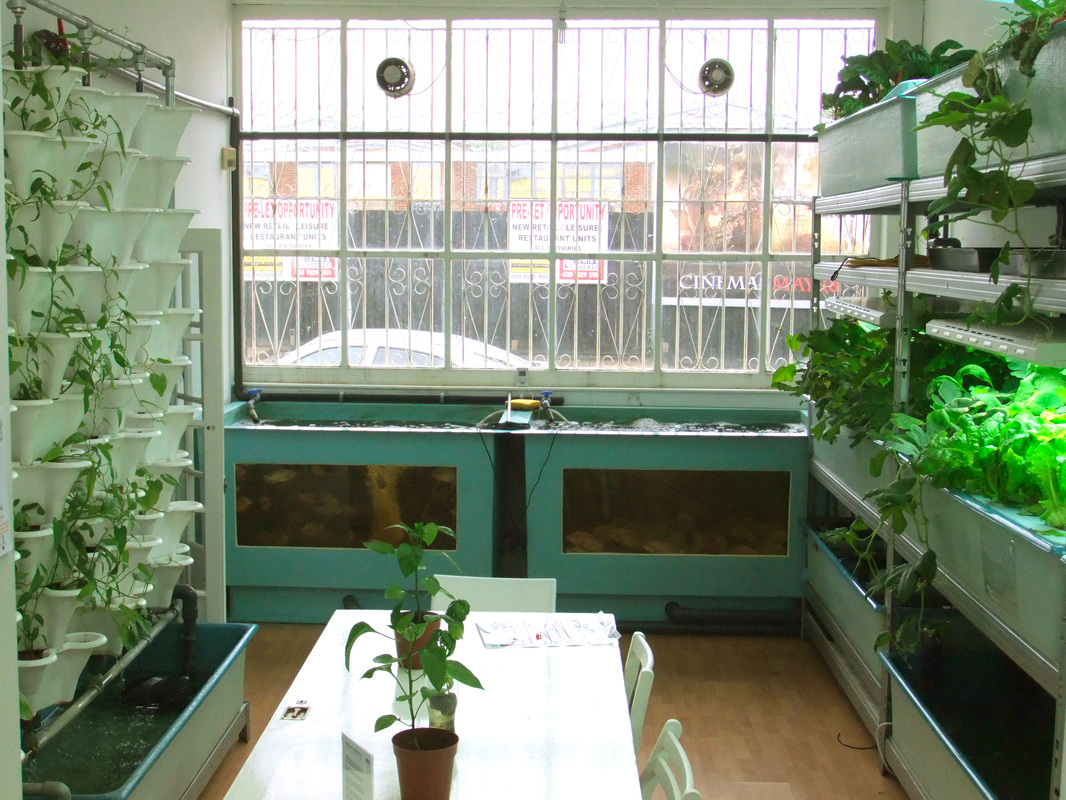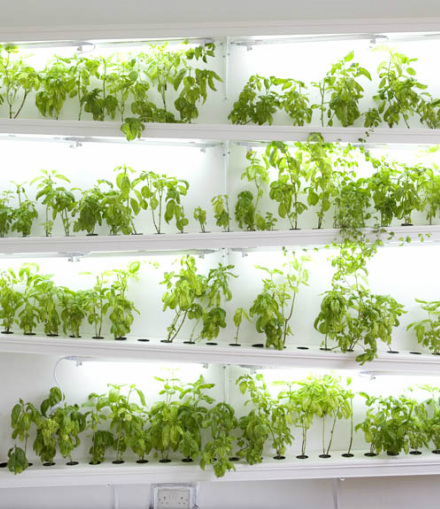GrowHow much food can you grow in a shop?
At FARM:shop we keep our busy cafe stocked by growing all of our own lettuce onsite and most of the herbs we use all year around. This is from a growing area of only 14 square metres of indoor and 12 square metres of outdoor space. Alongside this we farm eighty Tilapia fish, raise two chickens, and grow tomatoes, peppers, edible flowers and more. Our growing is imperfect and we often run into challenges but we use these farming experiments to teach us about the practicalities, yield, energy and water use of intensive farming. Find out more about our farming techniques below: To find out more about why we set up FARM:shop and our other urban agriculture projects visit the FARM: HQ AquaponicsThe aquaponics system is the largest system in FARM:shop and the source of much of our food. Aquaponics combines the farming of fish with plant growing in a smart natural cycle. Fish replace fertiliser making this system an eco-friendly alternative to artificial fertilisers.
Day-by-day we grow tilapia fish, salad and herbs in the system and have successfully grown courgettes, chilli's and flowers. Our fish are grown from tilapia fingerlings (baby fish) into 500g weight at which point they are ready for eating. The system was donated and installed by Aquaponics UK in 2011 and has been operated by FARM:shop ever since. FARM: HQ have adapted and integrated aquaponics into their pioneering food growing approach. Urban chickensWe keep two chickens in our backyard chicken coop which each lay 300 fresh eggs per year. The chickens were previously living on the flat rooftop of our farm but were sadly removed due to the health & safety concerns of our landlord Hackney Council.
|
HydroponicsFARM:shop has several hydroponic systems. Hydroponics is the growing of food in aerated water containing dissolved nutrient. Each different method aims to maximise oxygenation of the roots and delivery of water - functions dealt with in nature by the natural structure of soil. Over the passed few years we have tried the following systems at the farm:
Drip-feed - Slabs of Rockwool (Grodan) are fed a steady drip of water. This is the most common way of growing tomatoes and chillies in the UK. Nutrient Film Technique - The crops roots lie in a trickle of flowing water. A popular approach for lettuce growers. Flood and drain - The plant is grown in clay pebble (Hydroleca) or gravel and periodically submerged and drained. Aeroponics - The plants roots are suspended in the air and continuously sprayed with a nutrient mist. Floating raft - The plants sit directly in the water which is continuously aerated. Bubbleponics - A variant on aeroponics where bubbles close to the surface splash the root with aerated water. MushroomsOn occasion we grow oyster and shitake mushrooms - incubating the mushrooms in a warm room and then fruiting them in cold and humid conditions that replicate Autumn.
Soil and compostIn our view soil remains the simplest form of farming and in our experience crops grown this way have fewer diseases. We grow a range of food in our polytunnel and our indoor soil grow wall.
Lighting used for indoor growing also has is challenges and is often a poor imitation of sunlight and does not produce crops of the same quality. |








